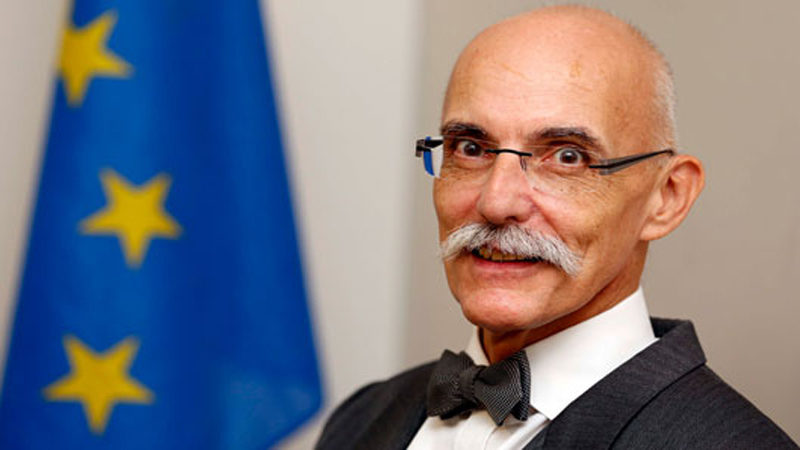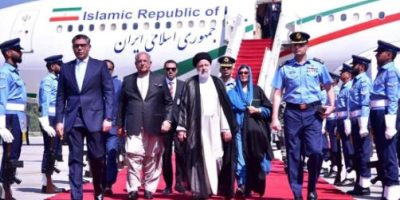Europe, Asia Connectivity: harnessing global challenges together

When the Venetian explorer Marco Polo returned from his 24-year-long journey throughout Asia in the late 13th century, not only did he bring back unknown spices and the practice of cartography, he also laid the foundations of a modern vision of the world.
His Travels described, in an innovative way, the possibility for two civilizations to exchange, interact and benefit from one another.
This conception has since then prospered in the minds of thinkers, merchants and traders who contributed on both sides to the development of symbiotic links between our two continents.
Perpetuating this longstanding and virtuous dynamic, the European Union is about to finalize its own strategy on connecting Europe and Asia and will also host the 12th Asia-Europe Meeting (ASEM) Summit in October in Brussels.
The theme of the Summit will be “Europe and Asia: Global Partners for Global Challenges”, aiming at strengthening dialogue and cooperation between the two regions, seeking collective action in a wide range of areas, including security, trade and investment, connectivity, sustainable development and climate action.
Connectivity has been at the core of the European model of integration and remains today a unique vector of stability and prosperity, beneficial to all stakeholders worldwide. It is by pooling their resources together and sustaining strong commercial exchange that the European states have managed to overcome wars and generate longstanding development.
Following this spirit, our ambition is to share our own experience to build two-way bridges with our Asian partners. Between our societies, our markets, and our people. Given its geostrategic location, the size of its population or the pace of its development, we believe Pakistan has an important role to play in this endeavour. Pakistan and the EU share the same ambition of supporting regional economic integration and connectivity amongst partners to improve comprehensive trade and investment opportunities for regional stability and economic growth. We both understand the potential and the positive spill-over of an enhanced linkage between Europe and Asia. Our current preferential trade arrangement, the GSP+ allowing Pakistan to benefit from substantial tariff preference to access the European market, belongs to the same ambition of enhanced cooperation in the world economy and the promotion of sustainable economic development.
The European Union’s approach to Euro-Asian connectivity is inclusive and far-reaching. It is designed to encompass all modes of transport connections as well as digital and energy links, to facilitate the interoperability of physical networks and institutional practices or to enhance our exchange in the fields of education, research, innovation, culture, and tourism.
While it has become impossible to imagine not being connected, the world continues to evolve at an unprecedented pace and becomes more complex every day. We have no choice but to adapt to both realities and address the risk of unpredictability. The benefits of connectivity should not be reached at the expense of our rights and our obligations when it comes to the security of our citizens or the sustainability of our planet. This is why the European Union’s approach also aims at promoting long-term development, respecting labour, social and environmental standards and at defending the principles of transparency and open procurement rules.
Connectivity is not a one-way road, nor a concept to benefit only one’s interests. If cooperation is the natural way of an increasingly interdependent world, it should be built on a strong basis to preserve and promote universal values. The European Union is ready to cooperate with partners on the basis of this approach and these internationally agreed principles. Euro-Asian connectivity should first generate better governance to ensure that our respective citizens are the primary beneficiaries of more interconnected markets. In this respect, our ambition is also to promote transparency, equal treatment, and access together with full respect of market principles, which are essential prerequisites to ensure mutual benefit.
We should address together the numerous factors that keep inhibiting connectivity and inclusiveness. The right infrastructure must be in place to stimulate trade’s ability to deliver sustainable development. This includes the physical infrastructure of essential roads and ports, the soft infrastructure of rules, institutions that help all relevant stakeholders take part in trade, and the digital framework to connect people to the global marketplace at lower costs. This also encompasses the reinforcement of the financial architecture of connectivity by stepping up our cooperation with Multilateral Development and Investment Banks.
The EU’s approach to connectivity is finally to make sure it is sustainable at different levels: not only economically, fiscally and socially but also environmentally at a time when the effects of climate change will likely hamper our capacity to interact with each other. We must link the scale of our upcoming exchanges to the necessary transition toward sustainable sources of energy as well as efficient, green and innovative transport. The time of exclusive dependence on fossil fuel is over, and the European Union encourages Pakistan to sustain its green engagement in this respect. We will continue to be engaged together on the path of cooperation. An ambitious and comprehensive one with a noble objective that is to link, always further, our societies and our people.
The Writer is the ambassador of the European Union to Pakistan.
Related News

Dar extends sympathy to UAE over torrential rains devastation
ISLAMABAD, APR 24: /DNA/ – Foreign Minister of Pakistan, Ishaq Dar held telephone conversation withRead More

PTI blasts FO for silence over US warning of imposing sanctions for doing business with Iran
Govt should issue befitting, solid response to US administration threatening statement ISLAMABAD: /DNA/ – PakistanRead More


Comments are Closed